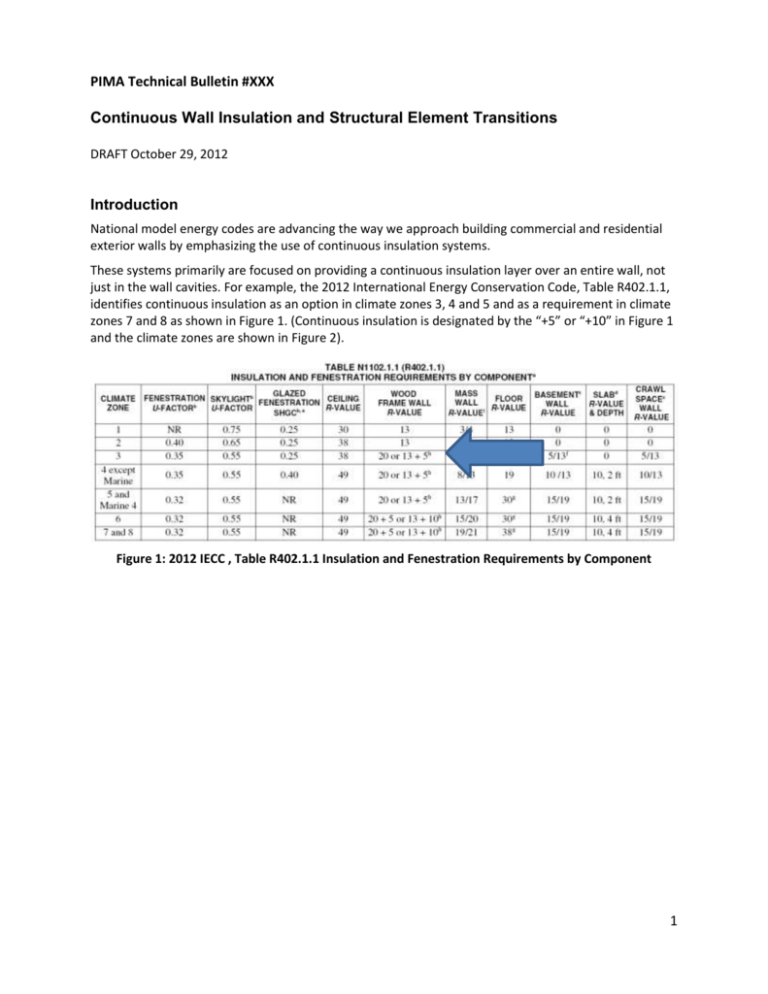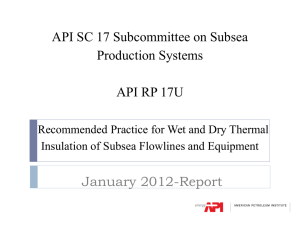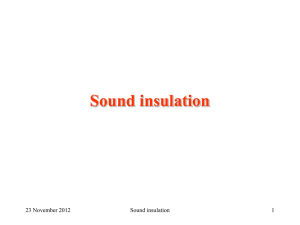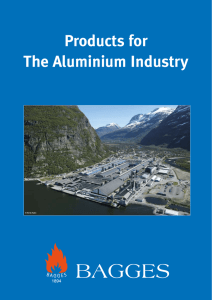What is Continuous Wall Insulation and What are
advertisement

PIMA Technical Bulletin #XXX Continuous Wall Insulation and Structural Element Transitions DRAFT October 29, 2012 Introduction National model energy codes are advancing the way we approach building commercial and residential exterior walls by emphasizing the use of continuous insulation systems. These systems primarily are focused on providing a continuous insulation layer over an entire wall, not just in the wall cavities. For example, the 2012 International Energy Conservation Code, Table R402.1.1, identifies continuous insulation as an option in climate zones 3, 4 and 5 and as a requirement in climate zones 7 and 8 as shown in Figure 1. (Continuous insulation is designated by the “+5” or “+10” in Figure 1 and the climate zones are shown in Figure 2). Figure 1: 2012 IECC , Table R402.1.1 Insulation and Fenestration Requirements by Component 1 Figure 2: IECC Climate Regions The concept, however, is also applicable to continuous insulation over the entire building envelope. The continuous insulation should be continuous at transitions between building envelope components such as wall to roof intersesections, wall to floor or foundation intersections or wall to wall intersections.). In addition, it is important to incorportate proper detailing for these transitions to minimize heat loss through thermal bridging. Building science experts have known for some time that continuous insulation is a very effective way to insulate building envelopes for energy savings. Now, modern building codes are putting this knowledge into practice. What is Continuous Wall Insulation and What are Transitions? Continuous insulation is not currently defined specifically in the ICC family of International Building Codes, but it is defined in ANSI/ASHRAE 90.1, Energy Standard for Buildings Except Low-Rise Residential Buildings. That definition of continuous insulation is: continuous insulation (c.i.): insulation that is continuous across all structural members without thermal bridges other than fasteners and service openings. It is installed on the interior or exterior or is integral to any opaque surface of the building envelope. 1 A topic not specifically addressed in ASHRAE 90.1 regarding the use of continuous insulation on walls is how wall-to-roof, wall-to-wall, wall-to-floor or wall-to-foundation (i.e., below-grade wall) intersections or transitions are to be handled. Specific requirements are included for each structural element (roof, above-grade wall, floor and foundation) , but the transitions from one structural element to another are not always clearly described and therefore may not be clearly understood or properly implemented. ASHRAE 90.1-2010, Energy Standard for Buildings Except Low-Rise Residential Buildings, American Society of Heating, Refrigerating, and Air-Conditioning Engineers, Inc., Atlanta, GA. All references to ASHRAE 90.1 are to this edition. 1 2 Where there are distinct differences related to the structural element material (metal, wood or masonry/concrete), the details that follow will include specific material considerations. Otherwise, the concept expressed by a detail should be applicable, regardless of material. ASHRAE 90.1 Definitions roof area, gross: “the area of the roof measured from the exterior faces of walls or from the centerline of party walls” floor area, gross: “the sum of the floor areas of the spaces within the building, including basements, mezzanine and intermediate-floored tiers, and penthouses with a headroom height of 7.5 ft or greater. It is measured from the exterior faces of exterior walls or from the centerline of walls separating buildings, but excluding covered walkways, open roofed-over areas, porches and similar spaces, pipe trenches, exterior terraces or steps, chimneys, roof overhangs, and similar features.” story: “portion of a building that is between one finished floor level and the next higher finished floor level or the roof, provided, however, that a basement or cellar shall not be considered a story” wall, above-grade: “a wall that is not a below-grade wall” wall, below-grade: “that portion of a wall in the building envelope that is entirely below the finish grade and in contact with the ground” wall area, gross: “the area of the wall measured on the exterior face from the top of the floor to the bottom of the roof” ASHRAE 90.1 also includes the following: 5.8 Product Information and Installation Requirements 5.8.1 Insulation 5.8.1.9 Extent of Insulation. Insulation shall extend over the full component area to the required rated R-value of insulation, Ufactor, C-factor, or F-factor, unless otherwise allowed in Section 5.8.1. Appendix A A2.4 Attic roofs with wood Joists A2.4.2.3 Insulation in such roofs shall be permitted to be tapered at the eaves where the building structure does not allow full depth. Details [NOTE to Reviewers: Callouts in graphics will be added after style, view, etc. have been determined. See PIMA_03a&b for example. Font size will have to be increased if this size graphic will be used.] [NOTE to Reviewers: Names below graphics are file image names. Graphics will be renamed when finalized in document.] 1. Wall-to-Roof Transitions The definition of roof gross area specifically excludes portions of roofs outside the wall perimeter (overhangs), and, although not specifically stated, the gross area determination for ceiling insulation would be based on the same criteria. This requires that roof/ceiling insulation be continuous to the exterior faces of all walls, which is not always the case in building practice due to the presence of framing members and/or blocking. When continuous wall insulation is required, it is to be continuous from the top of the floor to the bottom of the roof. In practical terms, however, the continuous wall insulation typically overlaps the insulation in the roof, providing an even plane for installing siding. The following are the four roof/insulation configurations described in ASHRAE 90.1, section 3. The details drawn for each condtion show the continuous wall insulation extending to the roof sheathing 3 material to provide a continuous plane for the installation of siding materials and/or to provide an enclosure for the roof insulation: 1. Attic and other roofs: If the roof/ceiling insulation is located within or entirely below the roof structure, the continuous wall insulation should be continuous to the top of the ceiling insulation allowing for air flow below the roof sheathing. [PIMA_01a & b] 2. Metal roofs: If the roof/ceiling insulation is located entirely below the roof deck, the continuous wall insulation should be continuous to the underside of the roof deck as well. [PIMA_02a & b] 3. Roof with insulation entirely above deck: If the roof/ceiling insulation is located entirely above the roof deck, the continuous wall insulation should be continuous to the underside of the insulation on the roof deck. [PIMA_03a & b] 4 4. Single-rafter roof: If the roof uses a single-rafter roof where the roof insulation is located in the space between the rafters with an air space between the top of the insulation and the bottom of the roof sheathing, the continuous wall insulation should be continuous to the top-side of the insulation in the rafter cavity. This could also apply to truss top chords in unvented attics. [PIMA_04a & b] 2. Above-Grade Walls, Above-Grade Wall-to-Floor and Above-Grade Wall-to-Below-Grade Wall/Slab Transitions Where continuous insulation is required or used on walls, the intent is that “Insulation shall extend over the full component area.” This includes full coverage at inside and outside corners and transitions from one continuous insulating material to another (if there is more than one). As with the transition at the top of the wall, however, the transition at the bottom of the wall to the next supporting element is not described explicitly. (All illustrations below include termite flashing at the intersection of the wall or floor and the foundation.) A few examples of how to make these transitions include: 1. Wall with floor continuous to the exterior wall line a. Where wall, floor and bearing below are in line 5 [PIMA 1FloorA] b. Where wall and floor cantilever over bearing below [PIMA 1FloorB] 6 2. Wall to foundation wall where floor does not extend to the exterior wall line a. Where foundation wall has a partial cut-out to carry floor framing elements [PIMA 2FloorA] b. Where floor is top chord bearing [PIMA 2FloorB] 7 3. Wall to slab, slab-on-grade or monolithic slab [PIMA 3FloorA] [PIMA 3FloorB] 8 3. Corner Treatment Both inside and outside corners need to have the continuous insulation overlapped. Overlapping the continuous insulation at the corners reduces thermal bridging at these locations while increasing energy efficiency. [PIMA_1 OSC] [PIMA_1 ISC] Conclusions Details for how to handle the thermal insulation of structural element to structural element transitions are not explicitly described in building codes or ASHRAE 90.1. However, these transitions are extremely important for maintaining the expected thermal performance of the building. These transitions, if not properly addressed, can lead to large thermal bridges allowing unnecessary heat loss. Proper detaining of these areas helps to provide comfort to building occupants and minimize heat loss through the building envelope. 9









